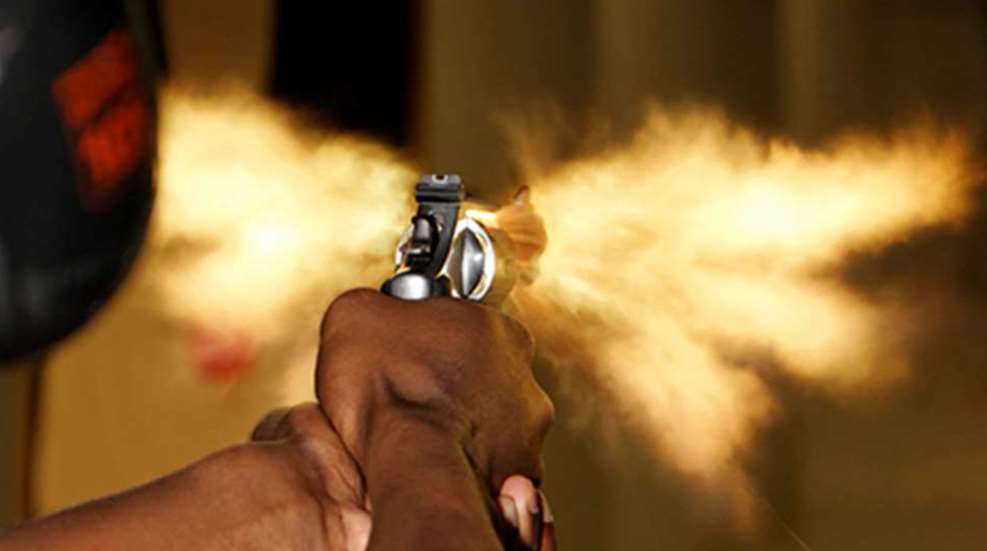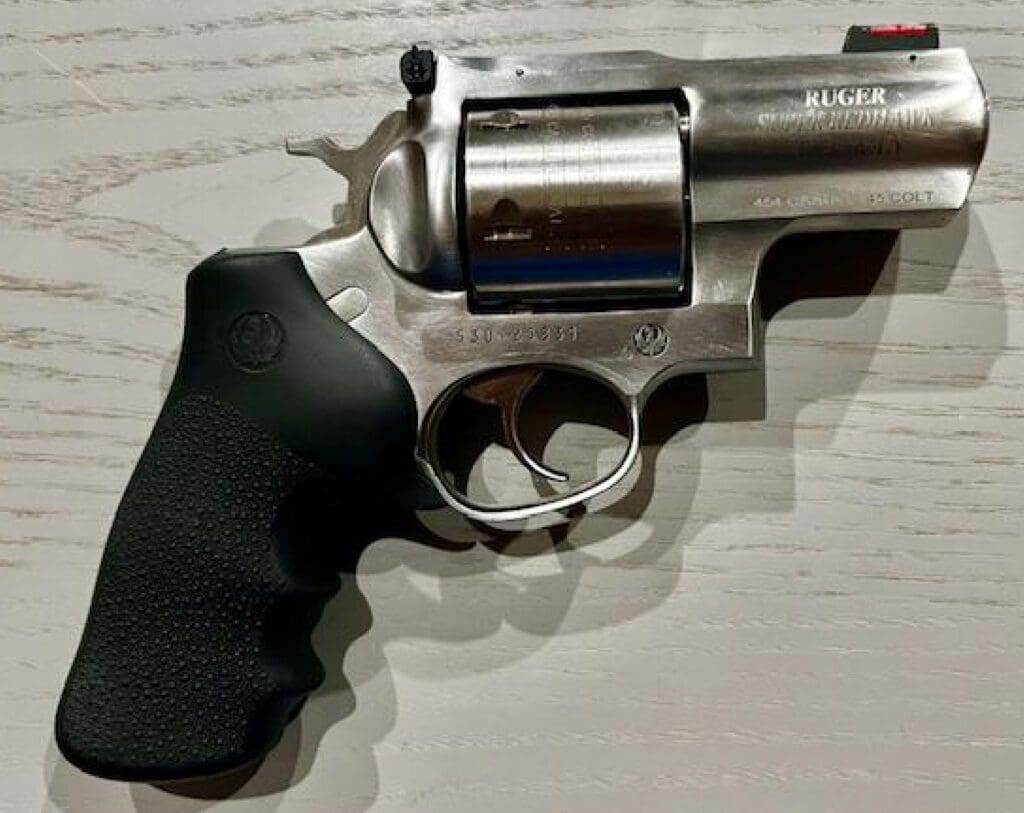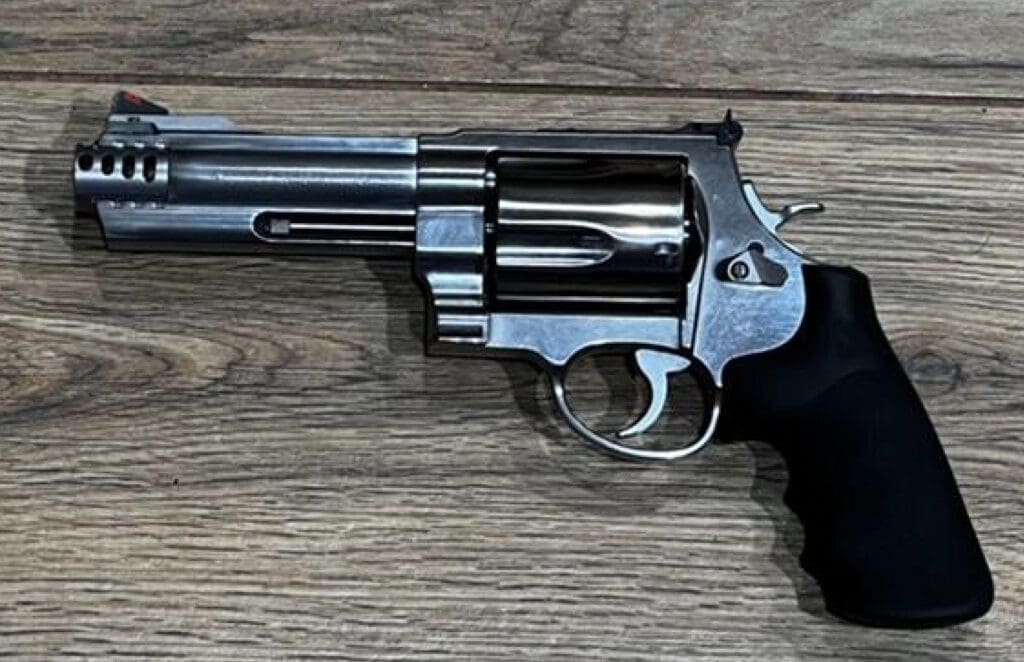Big Bore Handguns are Here to Stay
Tags:

Big Bore Handguns are Here to Stay – NRA Women.com
Regardless of what you call these large powerful handguns, they are impressive to look at, remarkable to shoot, and leave a very notable hole.
When we hear the term “big bore,†large rifles with their accompanying belted cartridges might come to mind. Big bore is also used to describe several revolvers on the market. The term “big bore†usually refers to rifles with a muzzle foot pound (ft.-lb.) energy of over 5,000, and handguns with muzzle ft.lb. energy of over 1,000. Regardless of if you are talking about rifles or handguns, these firearms have awesome power for those willing to use them!
These guns are used for target shooting, hunting, and protection against anything with large claws and teeth. Even though there is limited practical uses for these firearms, there are some handgunners that are drawn to the big bore revolvers like a moth to a flame. These big bore revolvers include the .44 Rem Magnum, .454 Casull, .460 S&W Magnum, and the .500 S&W Magnum.
.44 Rem Magnum
The .44 Rem Magnum has its roots in the 1950s, when handloaders began their search for a big-bore handgun cartridge with higher pressures and better ballistics for hunting. Elmer Keith, a well-known gun writer (now iconic), as well as an avid reloader, approached Smith & Wesson and Remington to produce such a cartridge. The development of this cartridge was based on the .44 Special cartridge. As a result, most revolvers chambered in .44 Rem Magnum can safely shoot the lower pressured .44 Spl. In 1955, Remington produced the .44 Rem cartridge and Smith & Wesson came out with the revolver that would evolve into the iconic Model 29.
This powerful cartridge became part American folklore in the 1970s. in 1971, Clint Eastwood starred in the film, Dirty Harry, the .44 Mag.-toting detective in San Francisco. It was not long before the S&W Model 29 was either in every gun owner’s gun cabinet—or at least on their wish list.
The .44 Rem Magnum is still a popular cartridge today, and most modern gun manufacturers produce either a single- or double-action revolver in this caliber. Bullet weights for this caliber ranges from 180 grains to 340 grains with the most popular ranging between 240 to 300 grains. Muzzle velocities range from 1,300-1,900 feet per second (f.p.s.). Additionally, this powerful handgun has between 1,000-1,450 ft.-lbs. of energy at the muzzle.
.454 Casull

The .454 Casull was developed in 1958 by Dick Casull, Duane Marsh and Jack Fullmer. This powerful round started out as a wildcat cartridge designed for hunting and protection in bear country. The .454 Casull was based off the .45 Colt cartridge and quickly became an underground success. Since this cartridge was based off the .45 Colt cartridge, most revolvers chambered in .454 Casull can safely shoot the lower pressured .45 Colt. In 1983, Freedom Arms introduced a single-action revolver and soon after that, other manufacturers put out their own version in both single- and double-action models.
In 1997, the .454 Casull was recognized by the Sporting Arms and Ammunition Manufacturers’ Institute (SAAMI) and published acceptable pressures for this caliber. This cartridge has pressures exceeding 60,000 Copper Units of Pressure (CUP). Because of these pressures, this cartridge must use a small rifle primer than a pistol primer. Bullet weights for this caliber ranges from 240 grains to 400 grains with the most popular ranging between 260-320 grains. Muzzle velocities range from 1,500-1,900 f.p.s. Additionally, this powerful handgun has between 1,450-1,950 ft.-lbs. of energy at the muzzle.

.460 S&W Magnum
The .460 S&W was developed in 2005 by Smith & Wesson in partnership with the Hornady Ammunition company. This cartridge was based off the .454 Casull cartridge, making most firearms chambered in this round as one of the most versatile guns able to safely shoot four different calibers. Most guns chambered in .460 S&W, can safely shoot the calibers .454 Casull, .45 Colt, and .45 Schofield. The .460 S&W quickly became a favorite among handgun hunters.
Bullet weights for the .460 S&W ranges from 200 grains to 395 grains with the most popular ranging between 260-320 grains. Muzzle velocities range from 1,450-2,300 f.ps. Additionally, this powerful handgun has between 2,000-2,860 ft.-lbs. of energy at the muzzle.
The .460 S&W Magnum is large enough to take down any game in North America and almost anything in Africa. This gun is a large X-Frame, and many consider it the ultimate hunting handgun. It is not uncommon to see this large handgun with a scope mounted on top. Because of the weight of this gun, it is also not uncommon to see the user wearing a cross chest holster or even equip the gun with a sling. The barrel length of the .460 S&W Magnum ranges between 3.5 inches and 10.5 inches.

.500 S&W Magnum
The .500 S&W Magnum was developed in 2005 by Smith & Wesson in partnership with the Cor-Bon Ammunition company. This .500 S&W Magnum cartridge was developed to be the largest, most powerful, and most lethal handgun cartridge ever made. This cartridge is a semi-rimmed cartridge, unlike the other big bore cartridges, so it can be more compatible with tubular magazine fed rifles. This firearm was designed with hunters in mind.
Bullet weights for the .460 S&W ranges from 300 grains to 500 grains with the most popular ranging between 325-400 grains. Muzzle velocities range from 1,600-2,075 f.p.s. The muzzle energy of this powerful handgun has between 2,000 to over 3,030 ft.-lbs. of energy at the muzzle.
The .500 S&W Magnum is large enough to take down any game around the world. This gun is also large X-Frame, and primarily used for hunting and protection in dangerous predator country. Like the .460 S&W Magnum, it is not uncommon to see this large handgun with a scope mounted on top. Likewise, because of the weight of this gun, it is also not uncommon to see the user wearing a cross chest holster or even equip the gun with a sling. The barrel length of the .500 S&W Magnum ranges between 3.5 inches and 10.5 inches.
Regardless of what you call them—big bore revolvers, hand cannons or any other colorful descriptive name—large powerful handguns are here to stay. These firearms are impressive to look at, remarkable to shoot, and leave a very notable hole. If the power of these guns is a concern, properly following the 5 Fundamentals of Shooting can greatly reduce the felt recoil.
When it comes to big bore revolvers, do not knock it before you try it. Sometimes their BOOM is worse than their bite!
